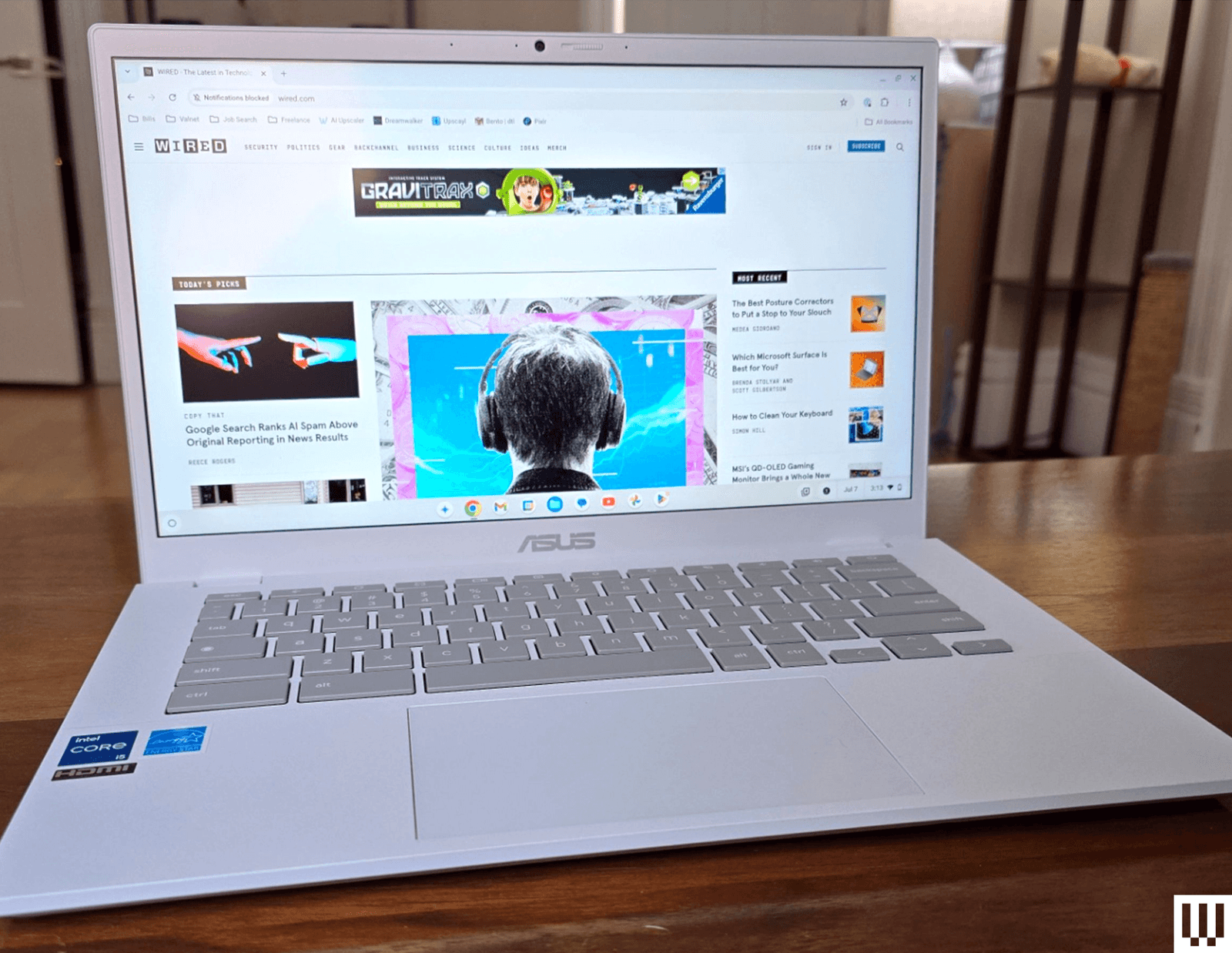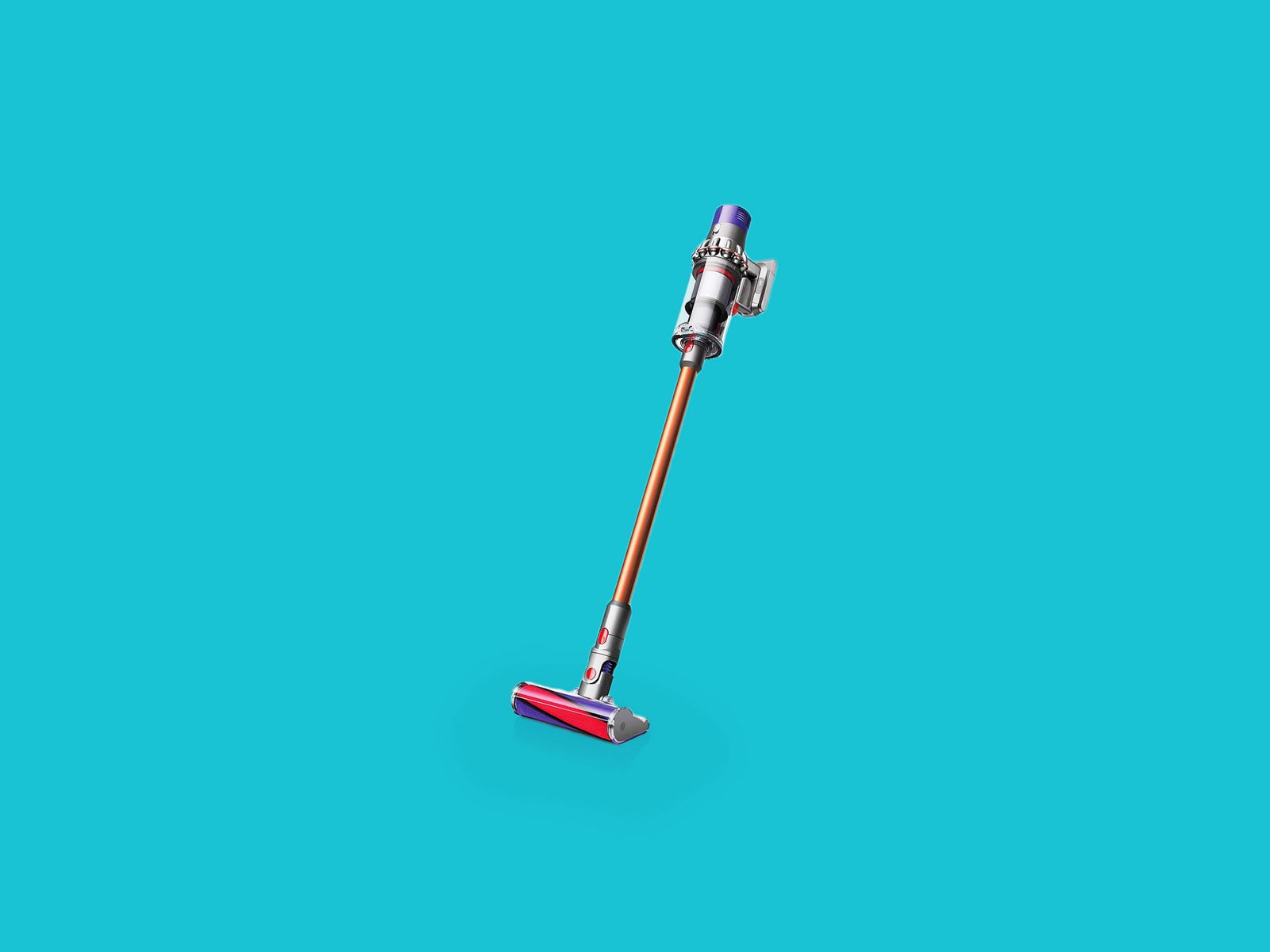Compare Top 12 Budget Laptops
Other Budget Laptops to Consider
Photograph: Daniel Thorp-Lancaster
The Acer Chromebook Plus Spin 714 for $750: The Acer Chromebook Plus Spin 714 (9/10, WIRED Recommends) checks a lot of boxes. It has a surprisingly premium feel for such an affordable machine, and the keyboard and trackpad are excellent for those of us who type all day long. It also has one of the best displays I’ve seen on a Chromebook, with fantastic colors that pop off the glossy touch display. It’s just a bit too expensive compared to something like the new Lenovo Chromebook Plus 14.
Acer Swift Go 14 for $730: The Acer Swift Go 14 (7/10, WIRED Recommends) has a chintzy build quality, a stiff touchpad, and lackluster keyboard backlighting, but it’s hard to beat the performance you get at this price. There’s also an array of ports that make it very versatile, including a microSD card slot. The Intel Core Ultra 7 155H chip with 16 GB of RAM makes for a surprisingly powerful punch when it comes to productivity work, and our tester noted decent results in AI tasks as well. We averaged 11 hours in our battery test (with a full-brightness YouTube video on loop), which is respectable.
Acer Chromebook Plus CX34 for $260: If you want to stand out from the crowd a bit and don’t need Windows, the Asus Chromebook Plus CX34 (7/10, WIRED Recommends) is the best-looking Chromebook. When I got my hands on the CX34, I was impressed by its beautiful white design that stands out in a sea of gray slabs. It’s not left wanting for power, either, with the Core i5 CPU inside offering plenty of performance to easily handle multiple tabs and app juggling.
What Are Important Specs in a Cheap Laptop?
Read our How to Choose the Right Laptop guide if you want all the details on specs and what to look for. In short, your budget is the most important factor, as it determines what you can expect out of the device you’re purchasing. But you should consider display size, chassis thickness, CPU, memory, storage, and port selection. While appropriate specs can vary wildly when you’re considering laptops ranging from $200 to $800, there are a few hard lines I don’t recommend crossing.
For example, don’t buy a laptop if doesn’t have a display resolution of at least 1920 x 1080. In 2025, there’s just no excuse for anything less than that. You should also never buy a laptop without at least 8 GB of RAM and 128 GB of storage. Even in Chromebooks, these specs are becoming the new standard. You’re selling yourself short by getting anything less. Another rule is to avoid a Windows laptop with an Intel Celeron processor—leave those for Chromebooks only.
Specs are only half the battle though. Based on our years of testing, laptop manufacturers tend to make compromises in display quality and touchpad quality. You can’t tell from the photos or listed specs online, but once you get the laptop in your hands, you may notice that the colors of the screen look a bit off or that the touchpad feels choppy to use. It’s nearly impossible to find laptops under $500 that don’t compromise in these areas, but this is where our reviewers and testers can help.
How Much RAM Do You Need in a Cheap Laptop?
The simple answer? You need at least 8 GB of RAM. These days, there are even some Windows laptops at around $700 or $800 that come with 16 GB of RAM standard, as part of the Copilot+ PC marketing push. That’s a great value, and ensures you’ll get the best performance out of your laptop, especially when running heavier applications or multitasking. Either way, it’s important to factor in the price of the RAM, because manufacturers will often charge $100 or even $200 to double the memory.
On Chromebooks, there are some rare occasions where 4 GB of RAM is acceptable, but only on the very cheapest models that are under $200. Even budget Chromebooks like the Asus Chromebook CX15 now start with 8 GB of RAM.
Are There Any Good Laptops Under $300?
Yes, but you need to be careful. Don’t just go buy a random laptop on Amazon under $300, as you’ll likely end up with an outdated, slow device that you’ll regret purchasing. You might be tempted by something like this or this, but trust me—there are better options, some of which you’ll find in this guide.
For starters, you shouldn’t buy a Windows laptop under $300. That price puts you solidly in cheap Chromebook territory. While these are still budget-level in terms of quality, they’re better in almost every way than their Windows counterparts of a similar price. A good example is the Asus Chromebook CX15.
If you want a Windows laptop that you won’t give you instant buyers remorse, you’ll need to spend at least a few hundred more. Once you hit $500 or $600, there are some more solid Windows laptops available, such as the Acer Aspire Go 14, though even there, you’re making some significant compromises in performance and storage capacity. These days, Windows laptops really start to get better in the $600-plus range.
Should You Buy a Chromebook or a Cheap Windows Laptop?
The eternal question. If you’re looking for a laptop under $500, I highly recommend that you opt for a Chromebook. I know that won’t be a possibility for everyone, as some have certain applications that require a Windows laptop or MacBook. If you do aim to get a Chromebook, make sure all your connected accessories and other devices are compatible.
Chromebooks give you access to a full desktop Chrome browser, as well as Android apps. While that leaves some gaps for apps that some may need, you might be surprised by how much you can get done without the need to install any software. Most applications have web versions that are every bit as useful.
While Chromebooks are most well-known as junky student laptops, the recent “Chromebook Plus” designation has filled in the gap between dirt-cheap Chromebooks and $800 Windows laptops. You’ll find some great Chromebook Plus options in the $400 to $600 range that have better performance and displays, while also looking a bit more like a modern laptop. The Lenovo Flex 5i Chromebook Plus is a great example of this. You can read more about the differences between Windows laptops and Chromebooks here.
Power up with unlimited access to WIRED. Get best-in-class reporting and exclusive subscriber content that’s too important to ignore. Subscribe Today.




